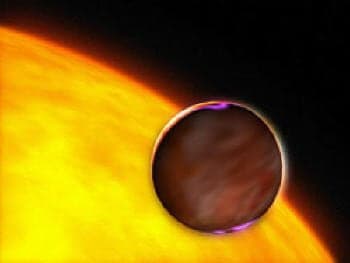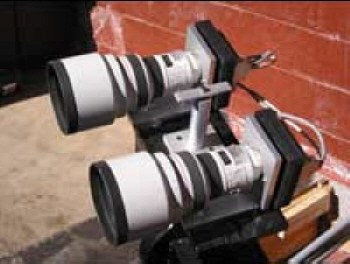An international team of professional and amateur astronomers, employing a budget telescope atop a Hawaiian volcano have discovered their first extra-solar planet. This discovery demonstrates how effective amateurs can be in contributing to serious research. However, amateurs without $60,000 or a volcano need not apply.

The team, led by Peter McCullough of the Space Telescope Science Institute in Baltimore, included four amateur enthusiasts from Europe and North America. Their home made ‘XO’ telescope trawled the night sky, and every two months obtained sightings of several hundred likely planets. These were then narrowed down by the nine professional astronomers to a few dozen leads, which were then passed on to the amateurs for close observation and analysis.
Dubbed X-O1b, the planet is 300 light years away, and is found to have a mass approximately equal to that of Jupiter- that is roughly 300 times that of Earth. However it is also hotter than Mercury, being substantially closer to its sun than any planet in our solar system.
The telescope the astronomers used, which is composed of two 200-mm lenses, resembles a large pair of binoculars. Positioned on the Haleakala volcano, Hawaii, the telescope was made from off-the-shelf components, and cost a “relatively inexpensive” $60,000 dollars to put together. To amateurs who wish to follow in the footsteps of the X0-1b four, however, it is still not cheap.
Funded by a grant from NASA’s ‘Origins’ program, which supports projects to determine whether we are alone in the universe, the discovery sends a mixed message to avid amateur astronomers. Although this project proves that amateurs may well have the skills to make significant astronomical discoveries, the XO telescope was somewhat out of the price range for hobbyists, and the team “spent far more than $60,000 on software” according to McCullough. Luckily for this particular project, NASA have agreed to a further $225,000 grant, which will allow the group to continue for another three years, during which they aim to discover six more new planets.
“It was a wonderful feeling because the team had worked for three years to find this one planet” McCullough explained. “The discovery represents a few bytes out of nearly a terabyte of data; it’s like trying to distil gold out of seawater”.
One of the amateur astronomers was Paul Howell, who was ecstatic to get the chance to take part in the project. “I was just going out to look at some stars. At no time did I think a thing like this was possible,” he said later. “The brilliance of this particular programme is it combines the efforts of the professionals with amateurs who have lots of free time”
The team used the ‘Transit’ method for discovering new extra solar planets, monitoring dips in brightness of various stars. These dips indicated a partial eclipse by a planet, although the planet itself was too far away to see directly. The team discovered a 2% dip in brightness of the star XO-1 every four days, which means that XO-1b has a four-day orbit.
Once the planet had been discovered, astronomers at the McDonald observatory in West Texas were able to confirm its existence. This was accomplished using the radial velocity method, the Harlan J. Smith and Hobby-Eberly telescopes being used to measure the slight wobble induced upon the planet by its parent star. This also allowed them to accurately calculate its mass.
The star itself, XO-1, has characteristics closely mirroring those of our own Sun. This, and the similarities between XO-1b and Jupiter (which is another gas giant), leads to speculation about the possible presence of another planet which, in the words of McCullough, “could be similar to Earth”.





